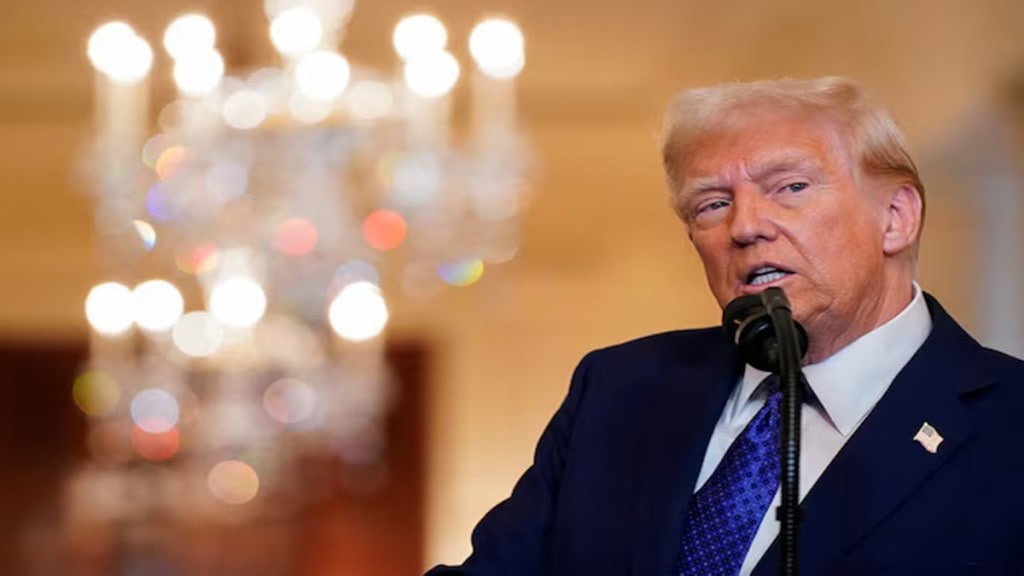US President Donald Trump has imposed a flat 26 per cent tariff on all goods being exported from India to the United States. The extensive measures, featuring a minimum 10 per cent tariff on all exporters and higher taxes on 60 countries, are designed to tackle what Trump describes as unfair trade disparities. According to Axis Securities, the direct impact on India remains limited after. “These (Trump’s tariffs) measures are expected to introduce considerable volatility in global markets, raising concerns around trade flows, supply chains, and broader economic growth. Despite this development, we believe the direct impact on India remains limited.”
India’s primary exports to the US include pharmaceuticals, telecom equipment, gemstones, petroleum products, gold jewellery, and ready-made cotton garments. On the import side, key commodities include crude oil, coal, petroleum products, electric machinery, and aerospace components.
Reacting to this, the Ministry of Commerce and Industry said that they are examining implications of measures/announcements made by the US President. The commerce department has also started consultations with the domestic industry and exporters to gauge the impact of the tariffs announced by the US.
Here is what top analysts, economists and industry leaders said about the the new tariffs:
Nilesh Shah, MD, Kotak Mahindra AMC
WTO is meant for weak nations. Strong nations can do what they want. They can even calculate tariffs as a deficit with the USA divided by exports to the USA and get away with it. We will soon see a case study to justify this novel definition. The US has imposed mass tariffs like this twice in history: in 1828 and 1930, with a gap of ~ 100 years. Both those resulted in the recession/Great Depression. There is a high chance that the 2025 mass tariff hike will result in lower growth and higher inflation. If US markets are correcting, US consumption, which accounts for two-thirds of the economy, could come under pressure due to higher inflation and the evaporating wealth effect. For emerging markets, it will be called stagflation, but for the US, it will be called a hard landing. The world will respond to US tariffs through currency weakening, negotiation with the US under clause 4 of the order to satisfy their concerns, counter-tariffs, and may be lobbying within the US to challenge this order in the judiciary. India has been hit lower than most of its peers. It is up to us how we manage the situation. We can bring footwear and garments business from Asian peers if we get our act together. We have to be proactive about Chinese dumping. We should negotiate hard with China to create a win-win situation rather than the usual lose-lose situation. Most importantly we need to remember that ‘Picture Abhi Baki hai’.”
Anubhuti Sahay, Head – India, Economics Research, Standard Chartered Bank
“An effective 20 per cent tariff increase on Indian imports to the US ( after considering the exempted goods) in our view is likely to adversely impact India’s GDP by 35-40bps, ceteris paribus. However, the final impact would depend on the trade deal agreement between India and the USA along with how each country negotiates/ retaliates on the proposed tariffs. While no reciprocal tariff on products like pharma and mineral fuels is a positive for India, negotiations on higher proposed tariff on agriculture products needs to be monitored as it’s a large employer. We estimate maximum impact on the agriculture sector given large tariff gaps and relatively higher value added for these products versus say other products.”
Sanjay Nayar, President, Assocham
“Tariffs unveiled by President Trump last night would bring a major realignment in global trade and manufacturing value chains. India has been placed somewhere in the middle of the tariff rates at 26 per cent in addition to 10 per cent baseline duties, which needs to be assessed for real impact. ‘Net-net, it appears India’s export competitiveness to the US market stands far less impacted on a relative basis. Yet our industry should make concerted efforts to increase export efficiency and value addition, to mitigate impact of these tariffs.
Since most American trading partners have planned to levy reciprocal tariffs, no country gets a winning advantage while consumers may end up paying more leading to inflationary pressures. While we wait and watch for global reaction, for India the way forward could be a quick preferential trade deal keeping in view that President Trump still respects the leadership of PM Modi.”
Madhavi Arora, Chief Economist, Emkay Global Financial Services
“Trump seems to have used the respective trade deficit of each country with the US as the basis for reciprocal tariff calculations, rather than the actual level of tariffs imposed by each country. Importantly, sector-specific tariffs will also be imposed, but those sectors will not be part of the country-level tariffs. For example, Indian autos will face a 25 per cent tariff, imposed on all autos globally, and not the country-level tariff of 26 per cent (or 26% +25%). Sectors such as pharma, semiconductors, copper, lumber, gold, energy and minerals will all be spared reciprocal tariffs. Mexico and Canada will also not face additional tariffs (25 per cent already imposed previously, with goods under USMCA exempted).”

